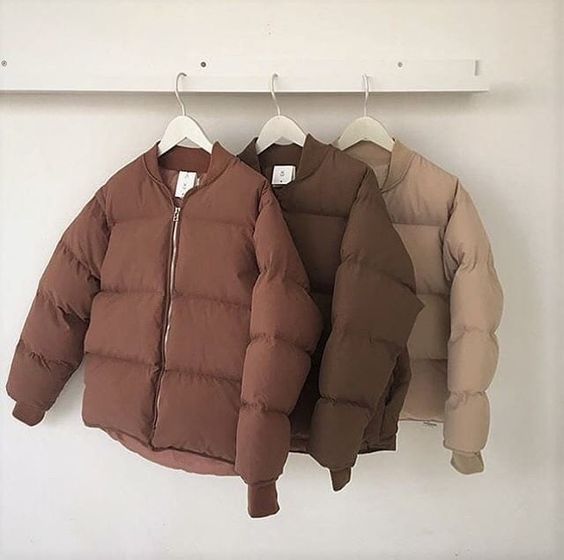Cashmere vs Wool: Which is Best and Key Differences
Cashmere vs. Wool: Which is Best and Key Differences
Winter is around the corner which means it’s time to have an open and honest conversation about these two wardrobe staples – Cashmere and Wool. You either love or hate these materials, and there’s no escaping them during the colder months. For many, cashmere and wool simply make Winter bearable and stylish at the same time. Let’s debunk these Winter wardrobe favorites: Cashmere vs Wool.
Which material should be your go-to for those chilly days? How do you choose the perfect fabric? What’s the cost? Let’s snuggle up and discuss!
Cashmere vs. Wool: Choosing the Perfect Winter Fabric

As winter approaches, the soft feeling of cashmere and the warmth of wool clothing are just necessary. Cashmere and wool are natural fibers known for their warmth and comfort. In this post, we’ll compare cashmere and wool to aid your winter wardrobe choice.
Cashmere and Wool: An Introduction
Cashmere comes from the soft fiber underbelly hair of pashmina goats in regions like Central Asia, Inner Mongolia, and New Zealand. It’s known for its luxurious softness, warmth, and light feel, thanks to its fine, long fibers.
Wool mainly comes from sheep, including breeds like Merino known for their fine and soft wool. Wool, a versatile natural material, has been used for centuries for warmth and durability.
Cashmere vs. Wool: Key Differences
1. Softness
Cashmere takes the crown when it comes to softness. Its fibers are finer and softer than those of regular sheep’s wool, making cashmere garments feel incredibly luxurious against the skin. If you’re looking for the softest material, cashmere is the way to go.
2. Warmth
Both cashmere and wool are excellent choices for keeping warm in cold weather. However, cashmere’s fine fibers provide superior insulation, making it one of the warmest fabrics available. If you live in an area with harsh winters, cashmere is a great choice for your winter wardrobe.
3. Durability
Here’s where wool has an edge. While cashmere is incredibly soft, it is also less durable than regular sheep’s wool. Cashmere garments can be delicate and may require special care to maintain their quality over time. Wool, especially virgin wool, is known for its durability and can last for years with proper care.
4. Price
Cashmere is often associated with luxury fabric and comes at a higher price point compared to most wool products. Wool, being more common, is generally more affordable, making it a practical choice for those on a budget.
5. Maintenance
Cashmere requires special care when washing, often needing gentle hand washing in lukewarm water and drying flat to prevent stretching or damage. Wool, on the other hand, is more forgiving and can often be safely machine-washed. Proper care is essential for both fabrics to ensure they maintain their properties and last longer.
6. Cashmere Blends
In recent years, cashmere blends have emerged, offering a compromise between the softness of cashmere and the durability of wool. These blends can provide a more budget-friendly option while still retaining some of the luxurious fabrics feel of pure cashmere.
7. Different Types of Wool
Wool comes in various types, with Merino wool being one of the softest and most highly sought after. Understanding the differences between these types of wool can help you choose the best wool one for your needs.
8. Luxury Items
Cashmere and high-quality wool garments are often considered luxury items due to their softness and warmth. Investing in such items can elevate your winter wardrobe and provide long-lasting comfort.
9. Sustainability
Consider the environmental impact when making your choice. Both cashmere and wool are natural, renewable fibers, but the sustainability of their production can vary depending on factors like farming practices and processing methods.
10. Personal Preference
Ultimately, your choice between best cashmere and best wool should align with your personal style, needs, and values. Some individuals may prefer the warmth and durability of wool, while others may prioritize the softness and luxury of cashmere pieces.


The Benefits of Wearing Cashmere
Cashmere, from the underbelly hair of cashmere goats, is preferred over regular wool due to its luxurious feel and benefits, making it a superior choice.
- Exceptional Softness: Cashmere is renowned for its unparalleled softness. The fine fibers of cashmere are significantly softer fiber and smoother than those of regular sheep’s wool. When you wear a cashmere garment, you’ll immediately notice the luxurious and gentle feel against your skin.
- Superior Warmth: Cashmere is one of the warmest natural fibers available. Its fine fibers trap heat efficiently, providing exceptional insulation. This makes cashmere garments perfect for staying warm even in the coldest of winters. If you live in an area with harsh winters, cashmere is an excellent choice for keeping cozy.
- Lightweight: Despite its remarkable warmth, cashmere is remarkably lightweight. This makes it a good ideal choice for winter season clothing as it provides insulation without bulk. You can enjoy the benefits of warm fabrics and comfort without feeling weighed down by heavy layers.
- Elegant and Luxurious: Cashmere garments exude an air of sophistication and luxury. They are often associated with high-end fashion due to their softness, elegance, and timeless appeal. Wearing cashmere can elevate your style and give you a sense of luxury that’s hard to match with a regular wool sweater.
- Breathability: Cashmere has natural breathability, allowing moisture and heat to escape while retaining warmth. This property ensures that you stay comfortable without overheating, making cashmere a versatile choice for various temperatures and climates.
- Long-Lasting Comfort: With proper care, grams of cashmere garments can maintain their softness and quality for many years. While they may require special attention when washing machines, the investment in cashmere fabric often pays off in the form of long-lasting comfort and style.
- Versatility: Cashmere can be woven into a wide range of garments, including sweaters, scarves, shawls, and more. Its versatility allows you to incorporate it into various aspects of your winter wardrobe, ensuring you can enjoy its benefits in multiple ways.
- Ideal for Sensitive Skin: Cashmere fiber is hypoallergenic and less likely to cause skin irritation or itching compared to some coarser wools. If you have sensitive skin, cashmere is an excellent choice for comfort and style without the discomfort.
- Luxury Blend Possibilities: Cashmere blends, which combine cashmere sweaters with other natural fibers like wool or silk, offer a compromise between the luxurious feel of cashmere and the durability of other materials. These blends provide additional options for those seeking both quality and affordability.
The Benefits of Wearing Wool
Wool can be a better choice than cashmere for many reasons: durability, affordability, versatility, breathability, sustainability, variety, and easy maintenance.
- Durability: Kind of wool is generally more durable and resilient than cashmere. Wool garments tend to withstand wear and tear over time, making them suitable for long-term use. They are less prone to damage and pilling, which can be a concern with delicate fabric cashmere items.
- Affordability: Wool is typically more affordable than cashmere scarves. If you’re looking for warmth and comfort on a budget, wool is a practical choice. It provides excellent insulation and comfort at a lower price of wool point, making it accessible to a wider range of consumers.
- Versatility: Wool is available in various types, each with its own unique properties. For example, Merino wool is known for its softness and versatility, making it an excellent choice for a wide range of garments, from sweaters to base layers. Wool’s versatility makes it suitable for various climates and activities.
- Breathability: Wool has excellent moisture-wicking properties and natural breathability. It can regulate body temperature effectively by wicking away moisture from the body, which is especially beneficial in situations where you may perspire or encounter varying temperatures.
- Sustainability: Wool fiber is an eco-friendly choice. It’s a renewable and biodegradable natural fiber. Sheep wool, the primary source of wool, graze on pastures, contributing to sustainable land management practices. Additionally, wool can be recycled and repurposed, reducing waste.
- Performance: Wool is often preferred for outdoor activities and sportswear due to its ability to retain warmth even when wet. It’s common materials used in high-performance clothing for activities such as hiking, skiing, and mountaineering.
- Variety: There is a wide variety of wool types available, each with its own characteristics. Some are more suited for specific applications, such as the use of coarser wool for heavy-duty outerwear or softer Merino wool for next-to-skin comfort.
- Easy Maintenance: Wool is relatively easy to care for and can often be machine-washed. This makes it a convenient choice for those who prefer low-maintenance clothing.
Cashmere vs. Wool: Which is Best?


It depends on your winter wardrobe needs. Personally, I prefer the soft and luxurious feel of Cashmere, but I can appreciate the durability and breathability of wool clothing. Wool also might not be the best choice for those of us with sensitive skin, as it can cause itchy skin for some.
Other Pro Tips & Care:
As an alternative, you can even find cashmere blends that combine the best of both worlds. These pieces offer a luxurious feel with added durability.
If you want Winter luxury, consider cashmere scarves, sweaters, and garments.
Maintenance: Remember that both cashmere and wool require proper care. Hand wash them gently in lukewarm water, and avoid tossing them in the washing machine. Hang them to dry, and they’ll reward you with good quality and softness for seasons to come.
So, when shopping for your Winter wardrobe, consider your fabric preference, budget, and style. Whether you opt for cashmere, wool, or a mix of both, you’ll be warm, cozy, and fabulous!
If you found this post helpful, please share it with a friend, and don’t forget to subscribe to our Newsletter for more attainable style guides.






